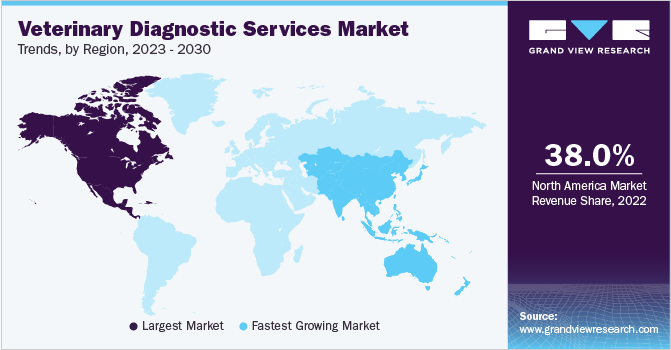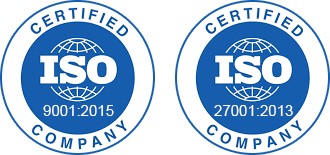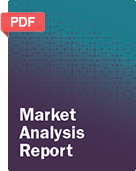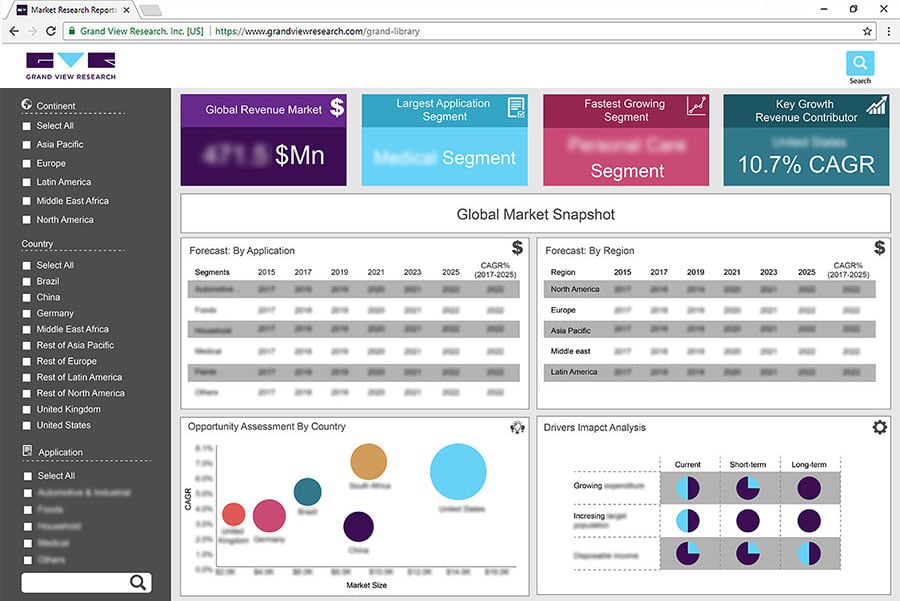- Home
- »
- Animal Health
- »
-
Veterinary Diagnostic Services Market Size Report, 2030GVR Report cover
![Veterinary Diagnostic Services Market Size, Share & Trends Report]()
Veterinary Diagnostic Services Market Size, Share & Trends Analysis Report By Test Type, By Animal Type (Companion Animals, Production Animals), By Testing Category, By Sector, By Service Provider, By Type, By Region, And Segment Forecasts, 2024 - 2030
- Report ID: GVR-4-68040-118-3
- Number of Report Pages: 150
- Format: PDF, Horizon Databook
- Historical Range: 2018 - 2022
- Forecast Period: 2024 - 2030
- Industry: Healthcare
Veterinary Diagnostic Services Market Trends
The global veterinary diagnostic services market size was estimated at USD 14.16 billion in 2023 and projected to grow at a CAGR of 8.28% from 2024 to 2030. The market growth is primarily driven by several factors such as the rising need for early disease diagnosis coupled with growing animal population and ownership rates; increasing initiatives by government organizations, animal welfare associations, veterinary industry key players to tackle zoonosis, technological advancements in veterinary diagnosis; and rising uptake of pet insurance.

The constantly rising pet population and growing adoption of dogs and cats are the key drivers of market growth. Most common pet animals, such as dogs and cats, are valued for providing better companionship to humans. Pets have become a part of each household due to their associated benefits, such as psychological comfort, stress reduction, and depression among adults, and helping overcome anxiety in humans. Such factors have increased pet ownership and pet humanization in various countries.
Due to social isolation and psychological advantages, the COVID-19 lockdown have greatly raised pet adoption rates globally. For instance, the UK experienced a boom in the adoption rates of pets, which during the pandemic, exhausted the shelters, according to a Frontiers Media S.A. report published in May 2021. Therefore, the growing pet population subsequently increases the demand and admission rates for veterinary diagnostic services in hospitals.
The COVID-19 pandemic had a positive impact on the global market by bringing about new ideas and trends and causing a sharp increase in admissions rates in the last quarter of 2020. A dramatic rise in the percentage of people owning cats and dogs, animal humanization tendencies, rising awareness of early detection of disease, and the expansion of telemedicine platforms are a few notable trends. Banfield Pet Hospital reported in January 2021 that there had been a 12.4% increase in kittens and a 9.2% increase in puppies brought into Banfield for veterinary consultations in 2020 compared to 2019.
Market Concentration & Characteristics
The market has a moderate concentration. It is currently in a medium growth stage. One major factor propelling the market growth is the increasing pet ownership and rising adoption of pet insurance. The global pet population has been steadily increasing, driven by various factors such as changing demographics, urbanization, and lifestyle trends. As more people are adopting pets, the overall pet population is anticipated to expand over the forecast period. This growth in pet ownership directly correlates with an increase in the demand for pet-related products and services, including veterinary care & pet insurance. For instance, in the UK, 4.3 million pets are insured, with dogs & cats being the most common pets covered.
The market demonstrates a moderate to high degree of innovation, characterized by technological advancements. Technological innovations in veterinary diagnostics services are transforming the way veterinarians diagnose and treat animals. These advancements improve the accuracy, speed, and efficiency of diagnostics, ultimately leading to better patient outcomes. For instance, portable diagnostic tools allow veterinarians to perform tests directly at the point of care, providing immediate results. Examples include handheld blood analyzers and portable ultrasound machines.

Within the market, there exists a moderate to high level of mergers and acquisitions activity, indicative of ongoing consolidation and strategic acquisition and partnerships among industry players. For instance, in September 2022, Zoetis acquired Newmetrica, expanding its companion animal portfolio with health-related quality-of-life instruments.
The market experiences a moderate impact of regulations. Laboratories often need accreditation from recognized bodies to ensure they meet international standards for competence and quality. Hence, regulations play a crucial role in shaping the veterinary diagnostics services market, influencing everything from product development and market access to operational practices and data management. While they ensure quality and safety, they also pose challenges that require strategic navigation by industry players.
Moderate levels of regional growth operations in the market are caused by initiatives by major competitors in the market. For example, in January 2024,IDEXX Laboratories expanded its Fecal Dx antigen testing platform to include Cystoisospora, a common intestinal parasite in young dogs and cats, providing early & accurate detection alongside other common parasites.
Animal Type Insights
Based on animal type, the companion animals segment led the market with the largest revenue share of 59.36 % in 2023. This can be attributed to increasing pet adoption during the COVID-19 pandemic and growing awareness about early disease diagnosis & health management. The adoption of companion animals, particularly dogs, is sharply rising in the U.S. According to the American Pet Products Association's National Pet Owners Survey 2021-2022, in the U.S., 69 million households (or approximately 54%) owned dogs. As many people in North America treat dogs as devoted family members, awareness about dog health management and the adoption of diagnostics services is expected to grow during the forecast period.
The production animals segment is projected to grow at the fastest CAGR during the forecast period, primarily owing to rising livestock productivity. Cattle, pigs, chickens, and other livestock are considered production animals. Rising zoonotic disease occurrence and a high livestock population are the main drivers of the production animal diagnostic services market. In addition, major market players are diversifying their product & service portfolios of diagnostic solutions and providing their services globally, which is anticipated to accelerate market growth.
Test Type Insights
Based on test type, the in vitro diagnosis segment led the market with the largest revenue share of 86.45% in 2023. Veterinary in vitro diagnosis (IVD) services are used to diagnose several animal diseases and monitor the health status of animals & therapeutic procedures by analyzing samples, such as blood, tissue, urine, feces, and other biological fluids. IVD services use various methods, including sequencing technology, polymerase chain reaction, mass spectrometry, and microarray techniques, to test the sample preparation. IVD tests are essential for managing normal animal health. Appropriate diagnosis and testing enable early-stage interventions, saving late-stage healthcare spending; thus, pet parents prefer IVD testing services. Therefore, demand for IVD services is expected to increase during the forecast period.
The in vivo diagnosis segment is projected to grow at the fastest CAGR during the forecast period. In vivo diagnostics services mainly consist of imaging technologies. Customer needs for veterinary in vivo diagnostics services have increased due to recent advancements in veterinary imaging. Demand has increased particularly for dual imaging technologies (PET/CT, PET/MR, and SPECT/CT), cross-sectional methods (MRI and CT imaging), and nuclear medicine techniques (PET and SPECT). Moreover, the surge in pet ownership rate, the growing need for efficient veterinary imaging, and advancements in in vivo diagnostic solutions are expected to boost the market growth during the forecast period.
Testing Category Insights
Based on testing category, the clinical chemistry segment led the market with the largest revenue share of 23.40% in 2023. The increasing volume of veterinary analytical services is the main factor driving the demand for diagnostic services for clinical pathological applications. Clinical chemistry examinations are crucial for determining the function of various animal organs, such as the liver, kidneys, and other organs. They can aid in diagnosing diseases like pancreatitis or diabetes in animals. The effectiveness of a pet’s treatment can also be tracked using these tests. The segment growth is also attributable to the accessibility of various clinical chemistry diagnostic services and their affordability. Major players such as IDEXX and Zoetis are engaged in the development and introduction of clinical chemistry diagnostic testing services necessary to diagnose numerous animal diseases.
The cytopathology segment is estimated to witness at the fastest CAGR during the forecast period. Cytopathology testing services can help identify cancerous cells or determine if a tumor is benign or malignant. It can also detect infectious microorganisms and others, such as yeast, with a unique appearance. The growing incidences of cancer in companion animals and the increased use of cytopathological cancer diagnosis services are expected to boost the segment share during the forecast period.
Sector Insights
Based on sector, the private sector segment led the market with the largest revenue share of 77.91% in 2023 and is anticipated to grow at the fastest CAGR of 8.49% over the forecast period. The private sector includes corporate reference laboratories and privately owned clinics/hospital-based laboratories. Private laboratories often focus solely on veterinary diagnostics, allowing them to develop specialized expertise. This specialization enables them to offer a wide range of advanced diagnostic tests & services specifically tailored to the needs of veterinarians and their patients.
Rather than investing in costly equipment and personnel training, veterinary clinics & hospitals may find it more cost-effective to outsource certain diagnostic procedures to private laboratories. Private laboratories can conduct these tests on a large scale, distributing the expenses among numerous customers and making their services cheaper for individual veterinary practices. These factors drive the market growth.
Service Provider Insights
Based on service provider, the veterinary hospital/clinic laboratories segment led the market with the largest revenue share of 89.86% in 2023 and is expected to grow at a CAGR of 8.06% over the forecast period. Owing to the increasing demand for diagnostics and readily accessible advanced diagnostic technologies in hospitals. This segment represents the revenue of veterinary hospitals, clinics, and academic institutions from the diagnostic services they provide to pet owners and livestock farmers. Veterinary hospitals often invest in advanced diagnostic technologies to enhance their diagnostic capabilities. These may include digital radiography, ultrasound, MRI, CT scans, and advanced laboratory equipment. The adoption of such technologies drives the market growth, as these hospitals become potential customers for diagnostic manufacturers.
The reference laboratories segment is projected to grow at the fastest CAGR during the forecast period. The sector represents revenue from diagnostic services directly offered to pet owners by independent or corporate-affiliated laboratories, such as Zoetis Reference Laboratories and World Organization for Animal Health/OIE-certified laboratories. For example, Zoetis Reference Laboratories offers full-service diagnostics, covering most species, with microbiology, hematology, serology, endocrinology, chemistry, and other advanced assays and comprehensive clinical and anatomic pathology testing.
Type Insights
Based on type, the point-of-care (POC) segment led the market with the largest revenue of 57.38% in 2023. The segment focuses on testing services offered at the POC, such as a farm, veterinary establishment, or home. Results are delivered within minutes or a few hours (much faster than sending out lab results), allowing veterinarians to provide efficient diagnoses and decide future steps (such as additional testing or treatment) within the same appointment. Overall, POC diagnostics in veterinary medicine transformed how veterinarians approach diagnosis and treatment, resulting in better patient outcomes and growing demand for such testing solutions in the market.

The laboratory-based segment is estimated to witness at the fastest CAGR during the forecast period. The laboratories are owned and operated by companies or public entities. Veterinary laboratories provide a comprehensive range of diagnostic tests and services to diagnose and monitor various animal diseases & disorders. Blood work, urinalysis, imaging investigations (X-rays, ultrasounds), cytology, histology, and specialized tests for infectious disorders such as parvovirus, heartworm, and feline leukemia are some of the tests that are regularly performed. Moreover, laboratories are necessary to monitor disease trends and outbreaks in animals.
Regional Insights
North America dominated the veterinary diagnostic services market with the largest revenue share of 38.60% in 2023. North America has seen a rise in pet ownership, with many households considering pets as family. This growing pet population has increased the demand for veterinary diagnostics services to ensure the health and well-being of these animals. In addition, pet owners are willing to spend more on their pets' healthcare, including diagnostics, surgery, and other medical services. The rise in veterinary healthcare expenditure has contributed to the growth of the market. Moreover, the presence of veterinary diagnostics laboratories in the region contributes to market growth.

U.S. Veterinary Diagnostic Services Market Trends
The veterinary diagnostic services market in the U.S. is growing due to a wide range of significant initiatives implemented by government animal care organizations continually working to improve animal health. The increasing numbers of farm and domestic animals are anticipated to increase demand for veterinary services, such as diagnostic tools, which will increase overall spending on pets. According to an article published by The World Animal Foundation in February 2023, citizens in the U.S. spent more than USD 123.6 billion on their pets.
Europe Veterinary Diagnostic Services Market Trends
The veterinary diagnostic services market in Europe held the second-largest share in 2023, owing to numerous players operating in the region. The veterinary diagnostics industry has seen significant advancements in diagnostic technologies, such as molecular diagnostics, digital imaging, & point-of-care testing. These technologies offer more accurate & efficient diagnostic solutions, driving demand in veterinary practices.
The Germany veterinary diagnostic services market is growing as major players are implementing strategies, including mergers & collaborations, to expand their product lines and produce high-value products, which is anticipated to increase demand for veterinary diagnostic kits in Germany. GVG Diagnostics GmbH, for instance, represents reliability, innovation, & excellence.
Asia Pacific Veterinary Diagnostic Services Market Trends
The veterinary diagnostic services market in Asia Pacific is estimated to grow at the fastest CAGR of 15% during the forecast period. Major reasons anticipated to propel the regional market growth are the rise in middle-class families, increasing disposable income, adopting companion animals, and the growing demand for animal proteins. Countries such as China & India are anticipated to have strong growth potential with the number of industrial facilities in the region increasing. Increasing R&D investment by market players in developing value-added products is expected to boost regional market growth.
The China veterinary diagnostic services market is growing rapidly due to an increase in middle-class families, a rise in disposable income, and an increasing number of people interested in spending money on their pets. In China, senior citizens are most likely to own pets. Increased pet ownership has led to a strong need for efficient healthcare services.
Latin America Veterinary Diagnostic Services Market Trends
The veterinary diagnostic services market in Latin America is driven by increasing meat consumption. The Latin American market includes Argentina & Brazil. According to FAO, Meat and milk consumption are perhaps more important both economically & politically in Latin America than in any other part of the world. The region's average annual per capita meat intake is 45 kg, nearly 2.5 to three times what is found in Asia & Africa.
The Brazil veterinary diagnostic services market is expected to grow at the fastest CAGR during the forecast period, owing to an increase in the number of healthcare reforms & expenditures. Increasing demand for better healthcare facilities is anticipated to boost market growth. In addition, the rising adoption of companion animals and increasing demand for animal food products are likely to boost the market growth of Brazil.
Middle East & Africa Veterinary Diagnostic Services Market Trends
The veterinary diagnostic services market in Middle East & Africa is anticipated to expand at a steady CAGR over the projected period, due to rising pet food demand and increased adoption of companion animals. In addition, the market is anticipated to rise as a result of rising demand for pet food and insurance, as well as increased awareness of animal diseases.
The South Africa veterinary diagnostic services market has a growing demand for disease diagnosis and high target population which is projected to fuel market growth in this country. The economic & social wellbeing of households in the entire country is influenced by livestock. For decades, it has served as the backbone of South African agriculture. In addition, the total meat production for South Africa in 2021 was 3.51 million tonnes. From 897,662 tonnes in 1972 to 3.51 million tonnes in 2021, South Africa's total meat production rose at an average annual rate of 3%.
Key Veterinary Diagnostic Services Company Insights
The market is competitive by nature due to the presence of a wide range of players, from small companies to huge global animal health companies such as IDEXX and Zoetis. These involve implementing cutting-edge and efficient diagnostic services to promote animal healthcare outcomes, diagnostic accuracy, efficiency, and cost reduction. Existing market players keep executing strategic initiatives such as joint ventures, mergers, and acquisitions and introducing new products and product upgrades to strengthen their position in the market. For example, in June 2023, IDEXX Laboratories, Inc. launched the first animal diagnostic test to detect kidney damage in dogs and cats. Later in 2023, the tests will be performed in IDEXX Reference Laboratories in the US and Canada, and the test will be rolled out across Europe in 2024.
Key Veterinary Diagnostic Services Companies:
The following are the leading companies in the veterinary diagnostic services market. These companies collectively hold the largest market share and dictate industry trends.
- Zoetis Services LLC
- Antech Diagnostics, Inc. (Mars, Inc.)
- IDEXX
- Neogen Corporation
- Agrolabo S.p.A.
- Esaote SPA
- Thermo Fisher Scientific, Inc.
- NationWide Laboratories
- Ellie Diagnostics
- FUJIFILM Corporation.
Recent Developments
-
In January 2024, IDEXX Laboratories expanded its Fecal Dx antigen testing platform to include Cystoisospora, a common intestinal parasite in young dogs and cats, providing early & accurate detection alongside other common parasites.
-
In January 2022, IDEXX expanded its reference laboratory options for different tests and services. This can enable veterinarians to meet the challenges in treating and diagnosing cancer.
Veterinary Diagnostic Services Market Report Scope
Report Attribute
Details
Market size value in 2024
USD 15.09 billion
Revenue forecast in 2030
USD 24.31 billion
Growth rate
CAGR of 8.28% from 2024 to 2030
Base year for estimation
2023
Historical data
2018 - 2022
Forecast period
2024 - 2030
Quantitative units
Revenue in USD million/billion and CAGR from 2024 to 2030
Report coverage
Revenue forecast, company ranking, competitive landscape, growth factors, and trends
Segments covered
Animal type, testing category, sector, type, service provider, test type, region
Regional scope
North America; Europe; Asia Pacific; Latin America; Middle East & Africa
Country scope
U.S.; Canada; Mexico; UK; Germany; France; Italy; Spain; Denmark; Sweden; Norway; Netherlands; Japan; China; India; Australia; South Korea; Thailand; Brazil; Argentina; South Africa; Saudi Arabia; UAE; Kuwait
Key companies profiled
Zoetis Services LLC; Antech Diagnostics, Inc. (Mars, Inc.); IDEXX; Neogen Corporation; Agrolabo S.p.A.; Esaote SPA; Thermo Fisher Scientific, Inc.; NationWide Laboratories; Ellie Diagnostics; FUJIFILM Corporation
Customization scope
Free report customization (equivalent up to 8 analyst’s working days) with purchase. Addition or alteration to country, regional & segment scope.
Pricing and purchase options
Avail customized purchase options to meet your exact research needs. Explore purchase options
Global Veterinary Diagnostic Services Market Report Segmentation
This report forecasts revenue growth at global, regional, and country levels and provides an analysis of the latest industry trends in each of the sub-segments from 2018 to 2030. For this study, Grand View Research has segmented the global veterinary diagnostic services market report based on animal type, testing category, sector, by type, service provider, test type, and region:
-
Test Type Outlook (Revenue, USD Million, 2018 - 2030)
-
In Vitro Diagnosis
-
In Vivo Diagnosis
-
-
Animal Type Outlook (Revenue, USD Million, 2018 - 2030)
-
Companion Animals
-
Dogs
-
Cats
-
Horses
-
Others
-
-
Production Animals
-
Cattle
-
Poultry
-
Swine
-
Others
-
-
-
Testing Category Outlook (Revenue, USD Million, 2018 - 2030)
-
Clinical Chemistry
-
Microbiology
-
Parasitology
-
Histopathology
-
Cytopathology
-
Hematology
-
Immunology & Serology
-
Imaging
-
Molecular Diagnostics
-
Other Categories
-
-
Sector Outlook (Revenue, USD Million, 2018 - 2030)
-
Public
-
Private
-
-
Service Provider Outlook (Revenue, USD Million, 2018 - 2030)
-
Veterinary Hospital/Clinic Laboratories
-
Reference Laboratories
-
-
Type Outlook (Revenue, USD Million, 2018 - 2030)
-
Point-of-Care (POC)
-
Laboratory-based
-
-
Regional Outlook (Revenue, USD Million, 2018 - 2030)
-
North America
-
U.S.
-
Canada
-
Mexico
-
-
Europe
-
UK
-
Germany
-
France
-
Italy
-
Spain
-
Netherlands
-
Denmark
-
Sweden
-
Norway
-
-
Asia Pacific
-
Japan
-
India
-
China
-
South Korea
-
Australia
-
Thailand
-
-
Latin America
-
Brazil
-
Argentina
-
-
Middle East and Africa (MEA)
-
South Africa
-
Saudi Arabia
-
UAE
-
Kuwait
-
-
Frequently Asked Questions About This Report
b. The global veterinary diagnostic services market size was estimated at USD 14.16 billion in 2023 and is expected to reach USD 15.09 billion in 2024.
b. The global veterinary diagnostic services market is expected to grow at a compound annual growth rate of 8.28% from 2024 to 2030 to reach USD 24.31 billion by 2030
b. North America held the largest share of more than 38.60% of the total market by region in 2023. North America has seen a rise in pet ownership, with many households considering pets as family. This growing pet population has increased the demand for veterinary diagnostics services to ensure the health & well-being of these animals.
b. Some key players operating in the veterinary diagnostic services market include Zoetis Services LLC, Antech Diagnostics, Inc. (Mars, Inc.), IDEXX, Neogen Corporation, The Animal Medical Center, Embark Veterinary, Inc., SYNLAB, NationWide Laboratories, Ellie Diagnostics, VETERINARY HEALTHCARE COMPANY (VETHC).
b. The market is primarily driven by the rising need for early disease diagnosis coupled with growing animal population & ownership rates; increasing initiatives by government organizations, animal welfare associations, & veterinary industry key players to tackle zoonosis, technological advancements in veterinary diagnosis; and rising uptake of pet insurance.
Share this report with your colleague or friend.
![gvr icn]()
NEED A CUSTOM REPORT?
We can customize every report - free of charge - including purchasing stand-alone sections or country-level reports, as well as offer affordable discounts for start-ups & universities. Contact us now
![Certified Icon]()
We are GDPR and CCPA compliant! Your transaction & personal information is safe and secure. For more details, please read our privacy policy.
We are committed towards customer satisfaction, and quality service.
"The quality of research they have done for us has been excellent."





